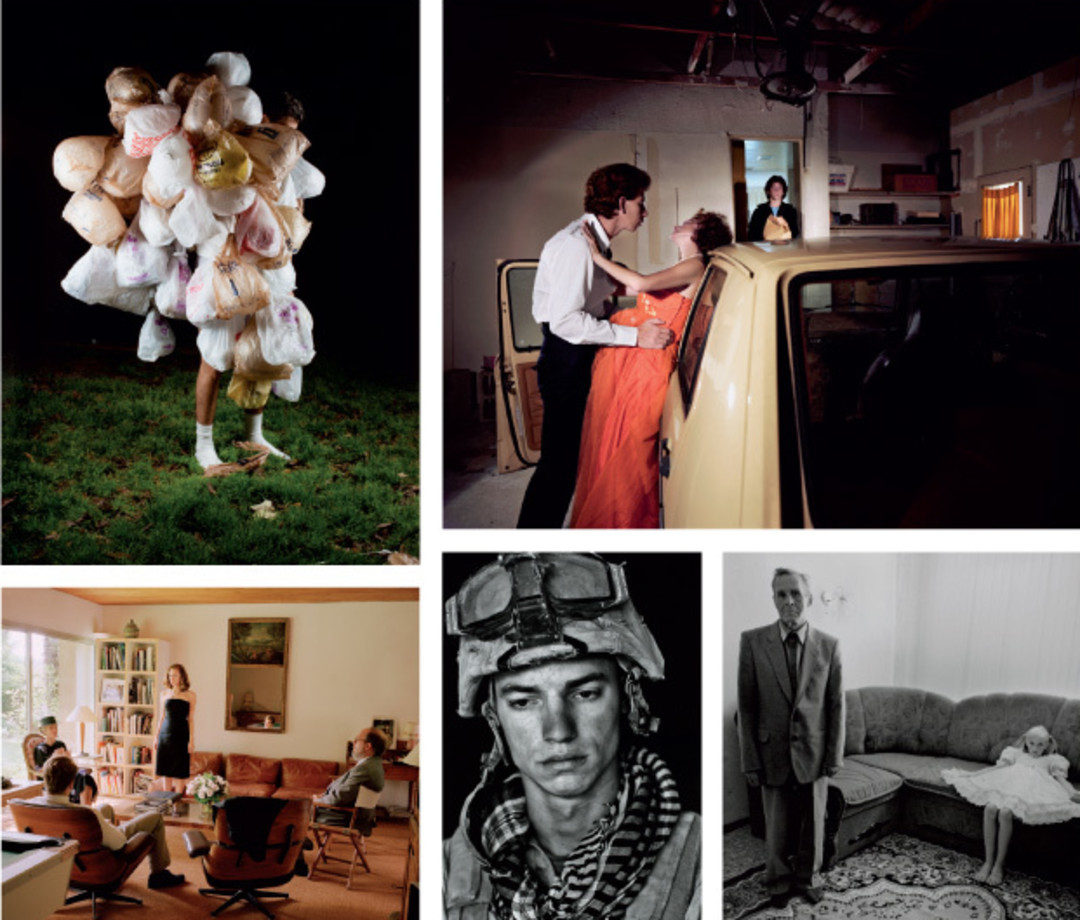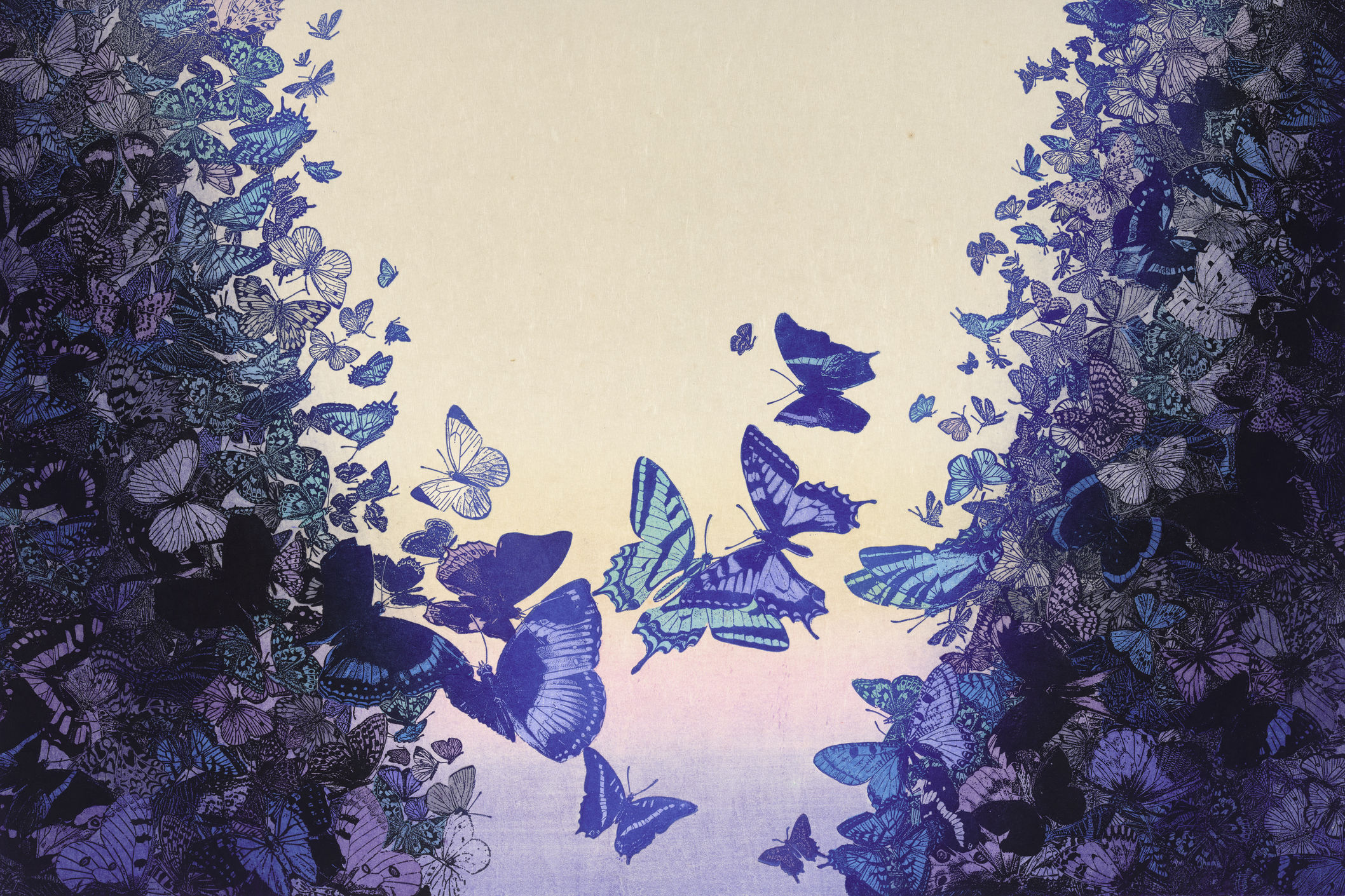How Blue Sky Gallery Became a Northwest Photography Mecca

CLOCKWISE FROM TOP LEFT: Works by Hillerbrand+ Magsamen, Eileen Cowin, Michal Chelbin, Louie Palu, and Jessica Todd Harper will be featured in the Portland Art Museum’s retrospective.
Out of the approximately 2,028 meetings that Blue Sky Gallery’s art selection committee has held on Tuesday evenings since 1975, Christopher Rauschenberg estimates he’s attended about 1,600. The purpose: to pick through the weekly submissions from photographers who hope to hang their work on the gallery’s walls.
Rauschenberg isn’t special, just persistent. Unlike most galleries, where a single gallerist or curator generally works with a stable of artists, anybody can join in on what may be the longest-running committee in art-scene history. The lone rule is “at the first viewing of an artist’s work, you can only say ‘maybe’ or ‘no’,” says Rauschenberg. “‘Yes’ requires two meetings.” Over Blue Sky’s 39-year history, more than 650 artists have made the cut. “It’s like graduate school in how deep the discussion goes,” Rauschenberg adds, “only without the bill.”
The gallery has featured famous photographers (Walker Evans, Harry Callahan, Mary Ellen Mark). Others would became famous (Jim Goldberg, Nan Goldin). Others dropped off the map. As a whole, Blue Sky’s history has earned an honor more typically reserved for artists and collectors: a retrospective at the Portland Art Museum called Blue Sky: The Oregon Center for the Photographic Arts at 40.
“To have an institution pay attention to photography—to survive—for as long as Blue Sky has is amazing,” says the show’s curator, Julia Dolan. “We don’t get that kind of charting very often.”
DIY well before the acronym became fashionable, Rauschenberg and four other photographers—Ann Hughes, Robert DiFranco, Craig Hickman, and Terry Toedtemeier—founded Blue Sky almost by accident. (Hughes liked the idea of starting a gallery better than taking a chance on having a new neighbor in the studio next door.) It was an era of artist-initiated galleries, from Seattle’s And/Or and New York’s Franklin Furnace to the Portland Center for the Visual Arts (founded three years before Blue Sky). Most subsisted on federal funding from the National Endowment for the Arts.
Blue Sky:
The Oregon Center for the Photographic Arts at 40
Oct 18–Jan 11
Portland Art Museum
Curator Julia Dolan and Blue Sky co-founder Christopher Rauschenberg will talk on Sunday, Oct 19 at 2 pm.
While Blue Sky enjoyed its NEA grants for two decades, the gallery thrived and survived more on pluck and luck. Hughes’s sharply designed posters for each show, mailed to galleries and schools across the country, put the gallery on the national map. The simple format of two artists every month and the gallery’s unusual committee selection gave (and still gives) Blue Sky cred among artists: an exhibition there seems more like a conversation with peers than the collecting and curatorial fads that often drive commercial galleries or museums. Rauschenberg recalls receiving the ultimate stamp of approval when an envelope arrived one day with an original negative from the famed photographer Robert Frank. “Make yourself some prints,” read a hand-scrawled note inside. Frank had been receiving the posters.
As Congress slashed NEA funding in the ’90s, Blue Sky eked by on local largesse, the most important (and the quietest) coming from its landlord, Al Solheim. Though the gallery had moved into increasingly valuable ground-floor Pearl District space in 1987, Solheim (often called the “father of the Pearl”) never charged more than $1,000 per month, and let late payments slide.
In the mid-’00s, when galleries like Elizabeth Leach and PDX Contemporary Art purchased their spaces to avoid being gentrified out of the Pearl District, Blue Sky bought into the DeSoto Building with a triple play of a deal involving everything from tax credits to the sale of a painting by Rauschenberg’s famed father, Robert Rauschenberg, to a gift from a local collector. All of the proceeds went to the gallery. Now with a staff of three, Blue Sky owns its space and even enjoys a small nest egg, which spins off interest that funds exhibitions.
Dolan is assembling most of the museum’s 130-plus-print tribute from local collections (another benefit of the gallery: it inspires Portlanders to buy photography). But Blue Sky’s art-world standing also remains strong enough to persuade major galleries like New York’s Matthew Marks and San Francisco’s Steven Wirtz to loan important pieces, like prints from books including Goldberg’s Rich and Poor and Goldin’s The Ballad of Sexual Dependency.
Meantime, the selection committee keeps its weekly date, attracting 25 regular attendees. The collective Blue Sky eye, Dolan notes, has long favored “socially concerned” work. The shows since 2001 that have explored war—images of occupiers and occupied, both on the battlefield and at home, by artists such as Louie Palu, Suzanne Opton, and Ellen Susan—have been the strongest, most cohesive collections, she argues.
“I used to think that convincing the committee to go my way was best,” says Rauschenberg, an accomplished photographer and voracious collector himself. “I’ve come to realize four or five or however many heads are better than one.”




